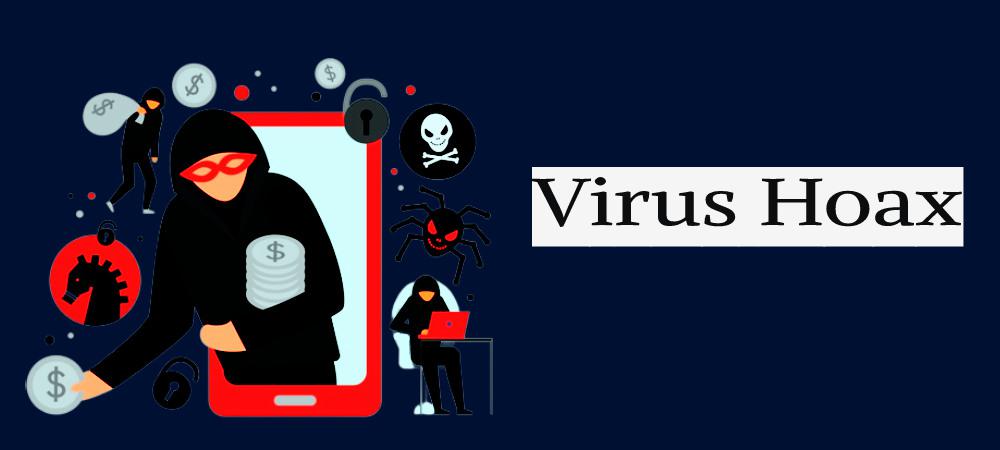Virus hoaxes are warning messages of viruses that are distributed via pop-ups, emails, and spam messages, the main objective of the virus hoax is to create fear and doubts in the user’s mind. When the user panics, they usually fall into the trap of a virus hoax and get infected with phishing or ransomware attacks.

The main target of virus hoaxes is the people who are not that sound in the technical aspect of the computer.
Identifying Virus Hoax:
- Focus on the nature of the alert, in most cases, the purpose is to make a person panic.
- Check for any kind of fake announcements.
- The message typically comes in dark colors like red to make user panic as red color is for danger.
- Check the origin of the message, most virus hoxes comes from weird sites.
- Check the language of the message, if it seems legit or just a dubious message.
Prevention from Virus Hoax:
- Don’t open spam emails that look suspicious.
- Never download third-party applications, in most cases, the applications are some kind of bad application software that steals our data.
- Report to the application if you find anything that looks like a virus hoax.
- Only open files from legitimate sources only.
- Make sure your antivirus is in a running state, most antivirus can detect any kind of virus hoaxes.
Examples of Virus Hoaxes:
- Good times virus: The Good Times virus was supposed to be transmitted via an email stating the subject as Good Times or Good times. It was started in 1994 and was passed among internet users.
- Antichrist: it was a hoax that warned about a virus that is discovered by Microsoft and McAfee named “Antichrist”. The subject line of this hoax was “SURPRISE”, later it is used to destroy the zeroth sector of the hard disk, making it unusable.




